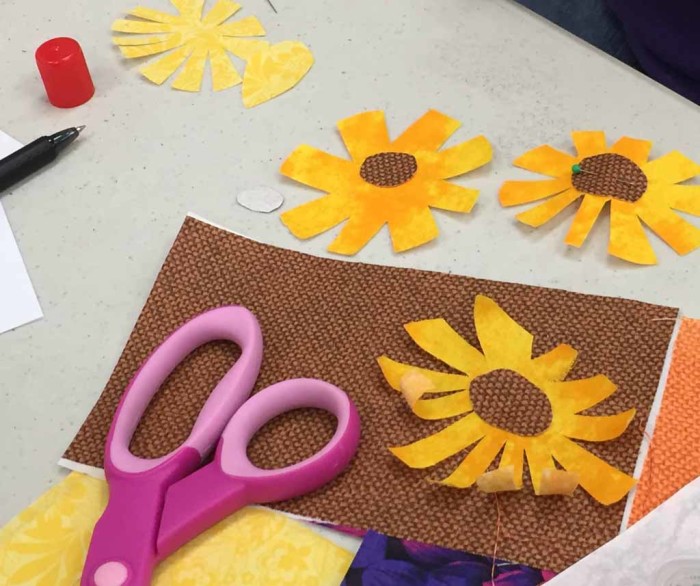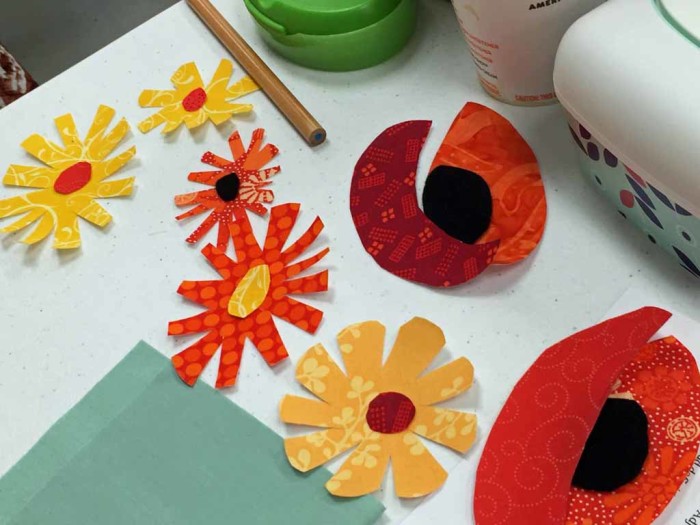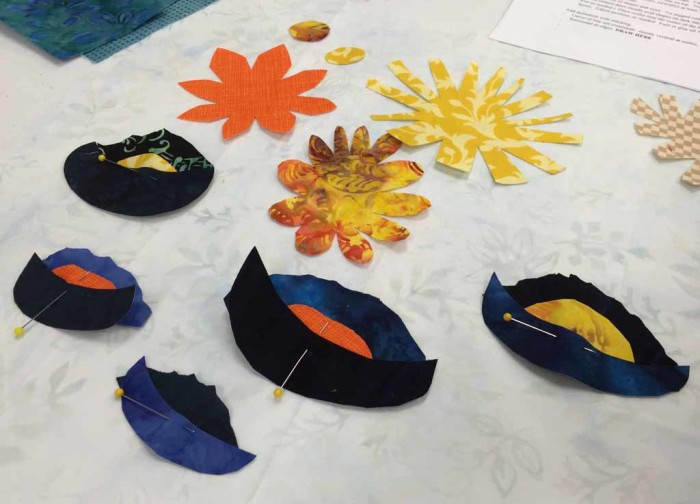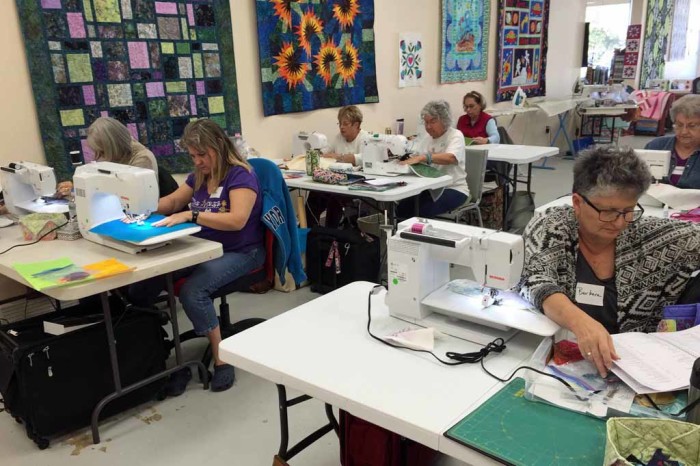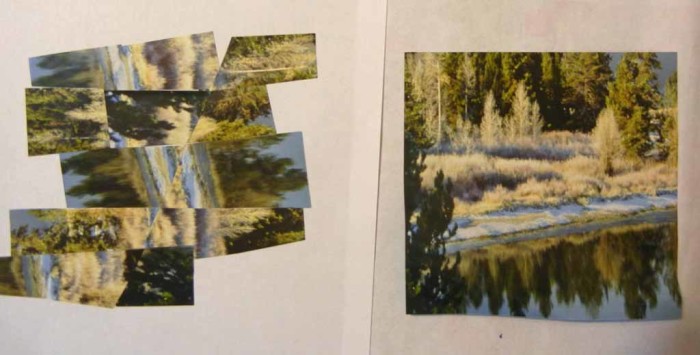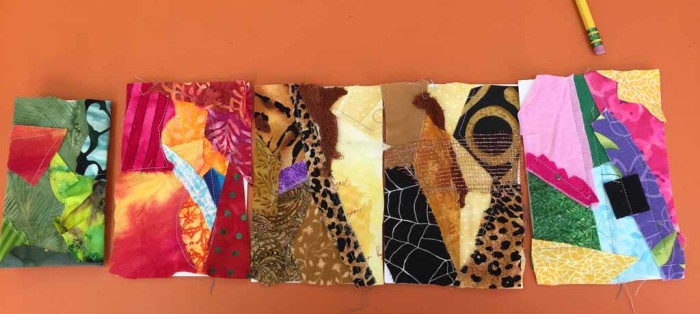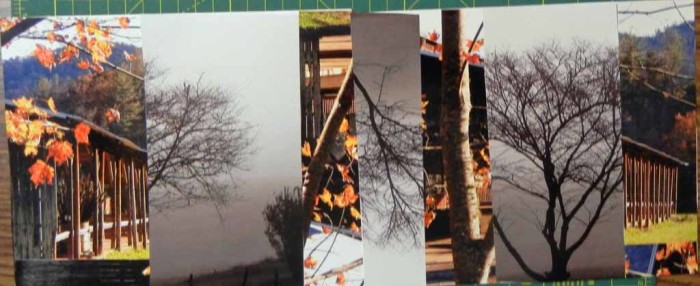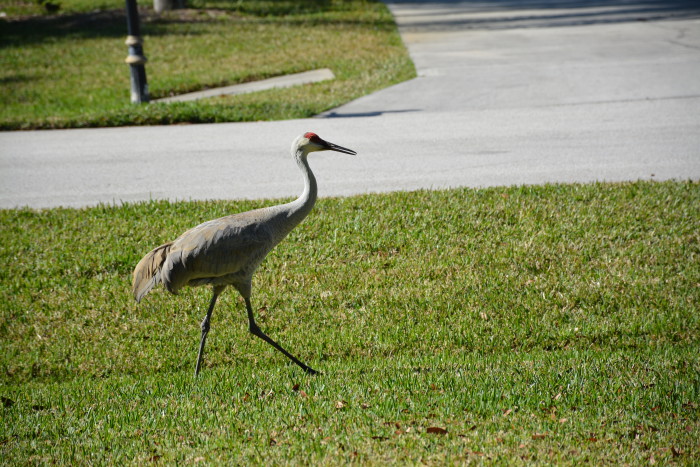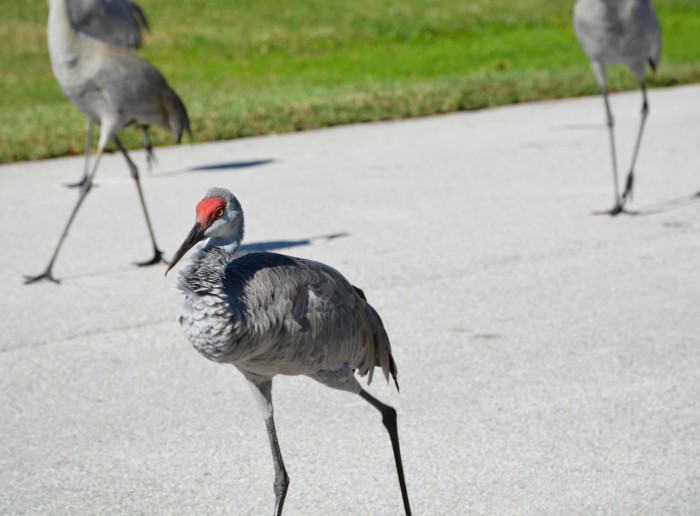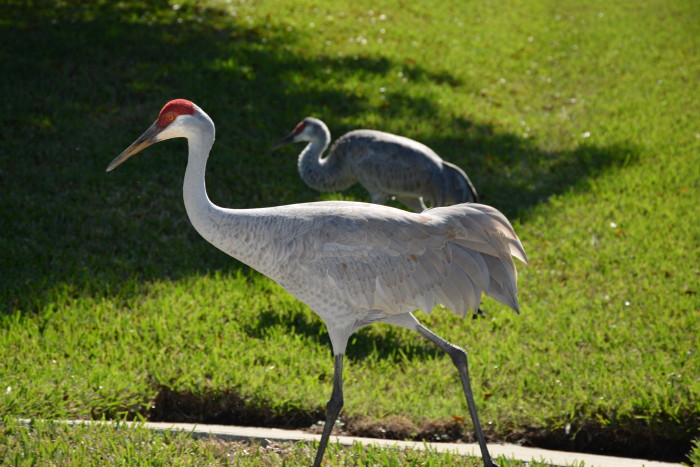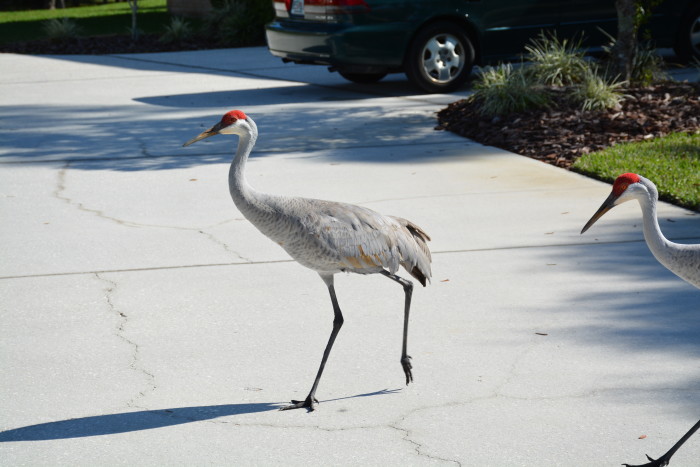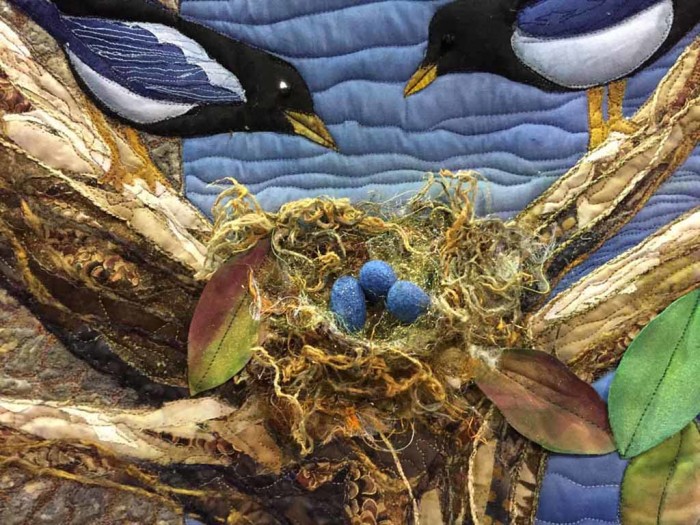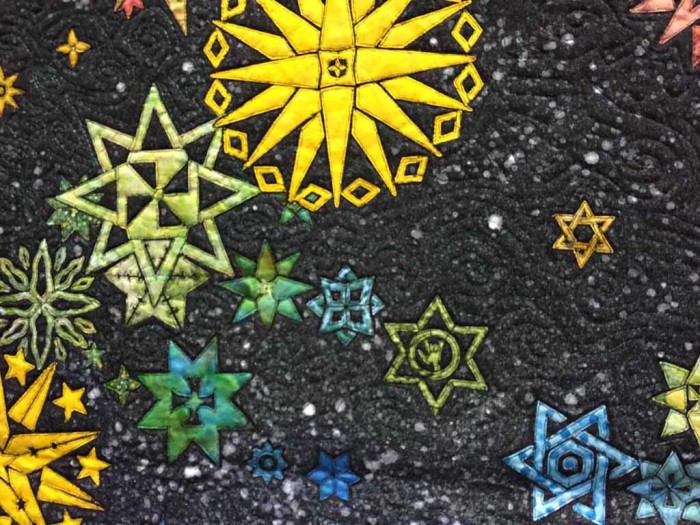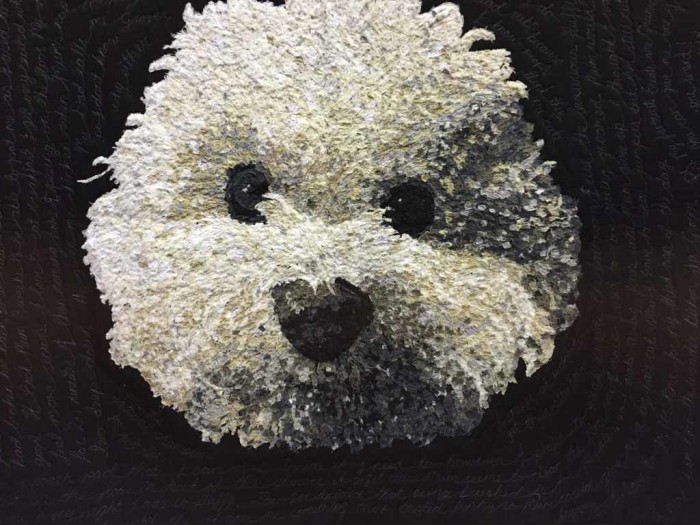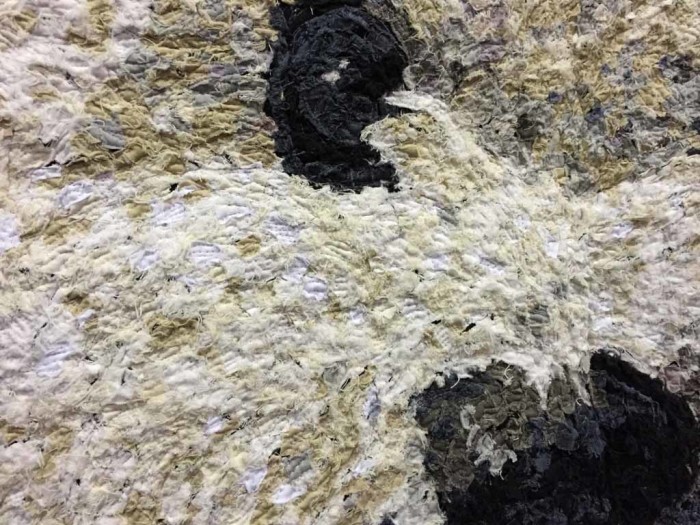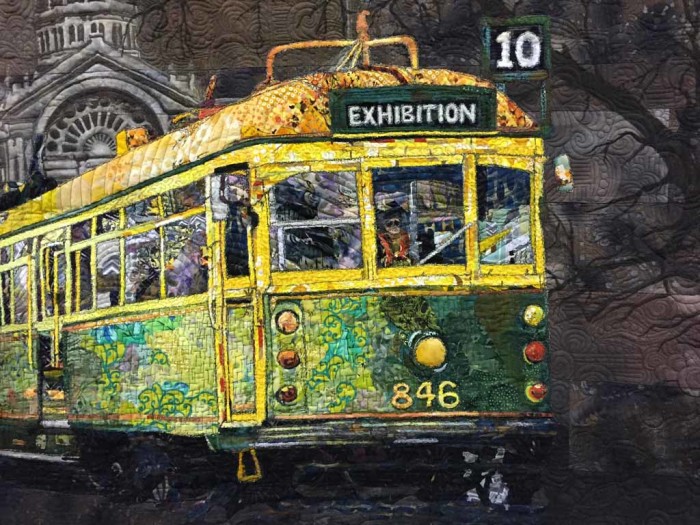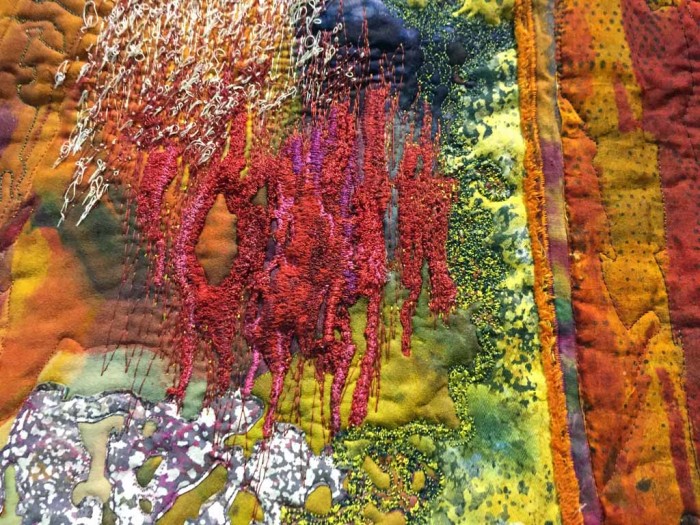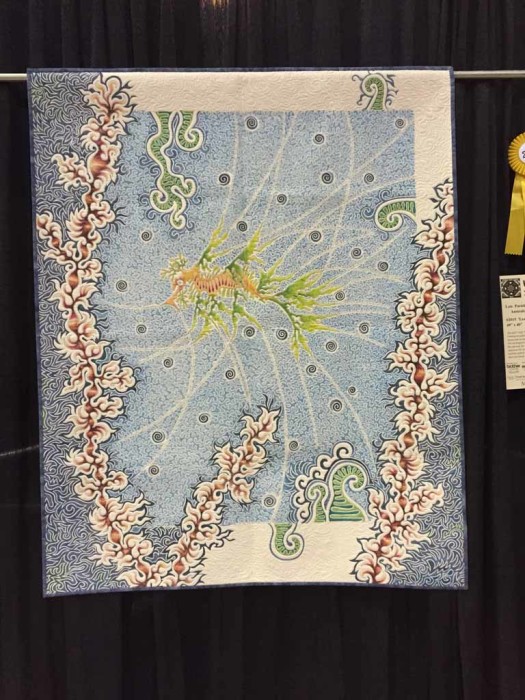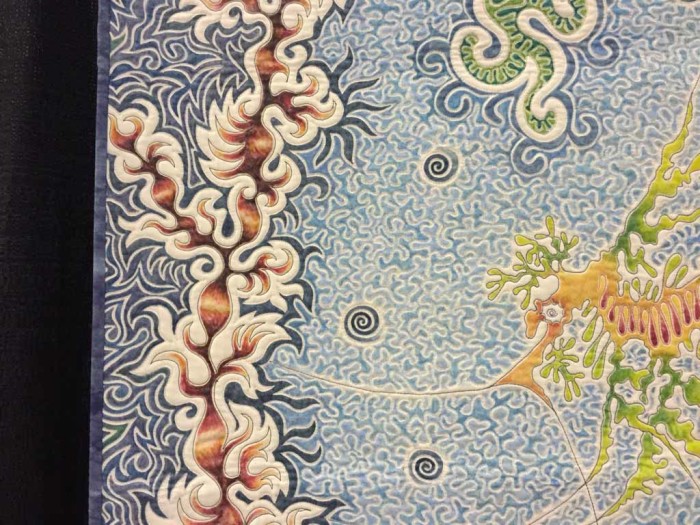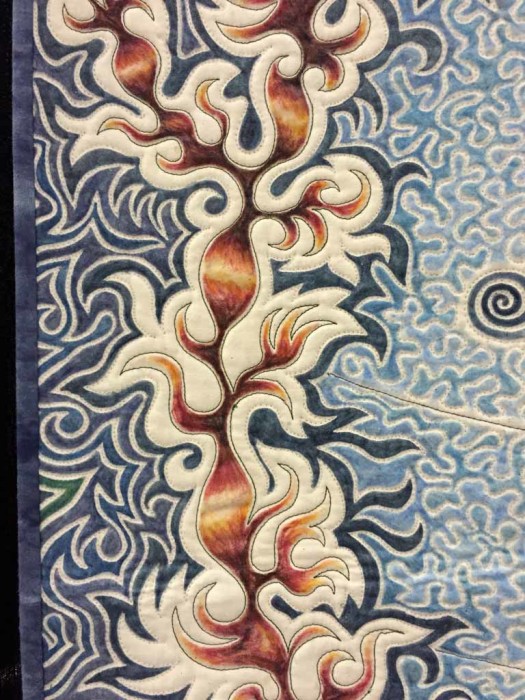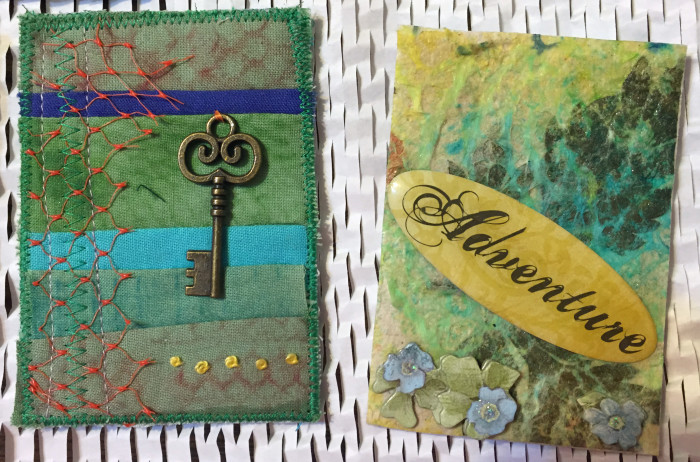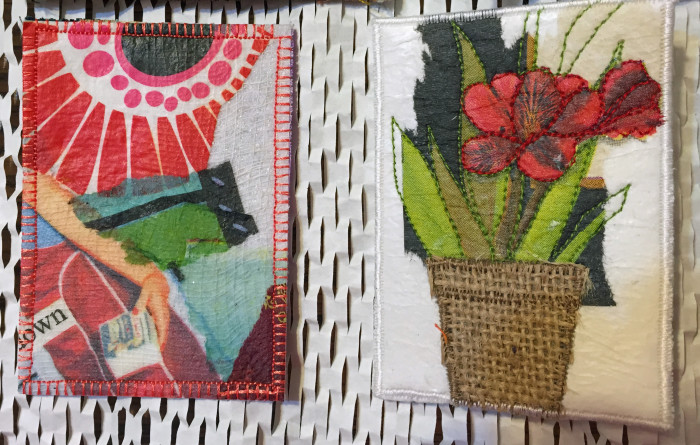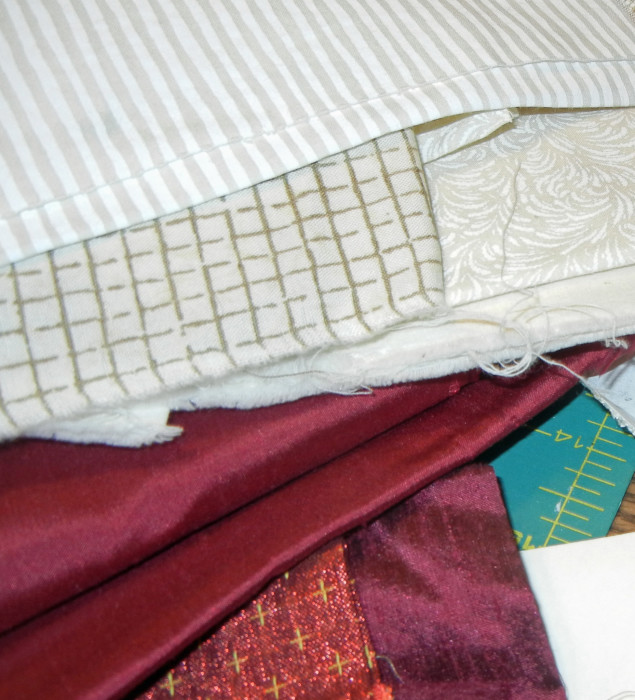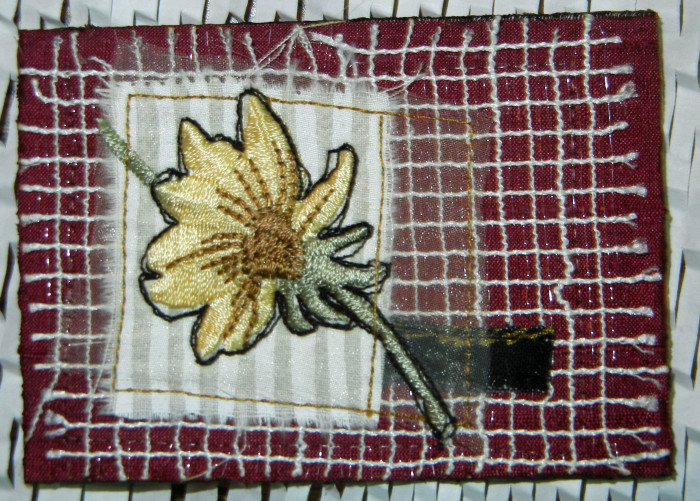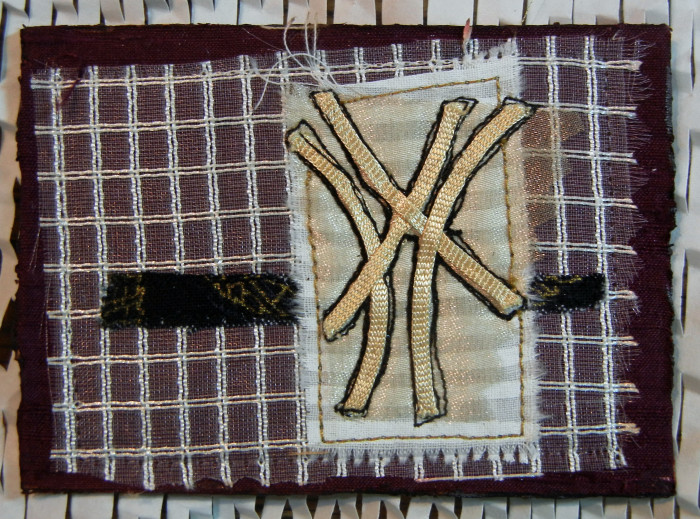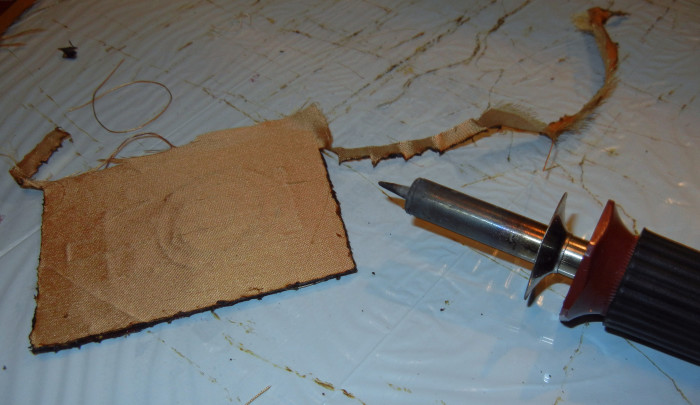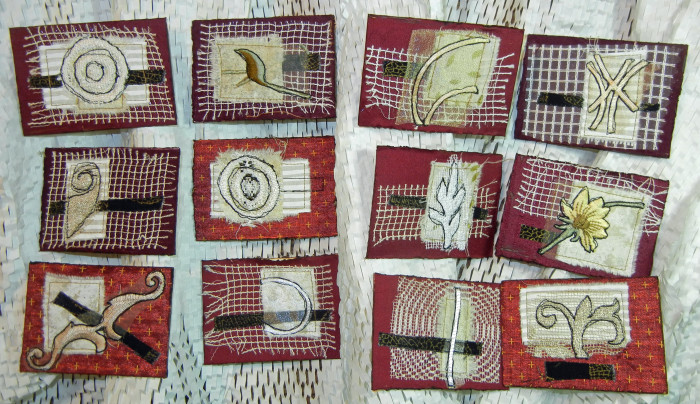To say that my Floral Improv students rocked it is an understatement. After a little instruction, they jumped right into drawing and cutting free-form flowers. Then, they learned a little about composition and design considerations and gave that a try. Along the way they were not afraid to try new things and they received suggestions beautifully. What a fun group to work with!
And just look at their results!
Barbara’s palette was delightful. She’ll add definition to the stems and leaves with dark stitching and then it will really pop!

Sharon’s quilt provides very high contrast, creating a lot of drama. Most students will define their poppy petals with dark thread, but Sharon will use a light gray. (But still something dark for the daisies and leaves.) This is going to be great.

Margaret selected complementary orange and blue with a happy dose of pink and purple added in. It’s very bright and cheerful!

Look at Kathi’s soft colors. Didn’t she do a good job with them? And what about the “body language” of her flowers? She used her curving stems to great advantage.
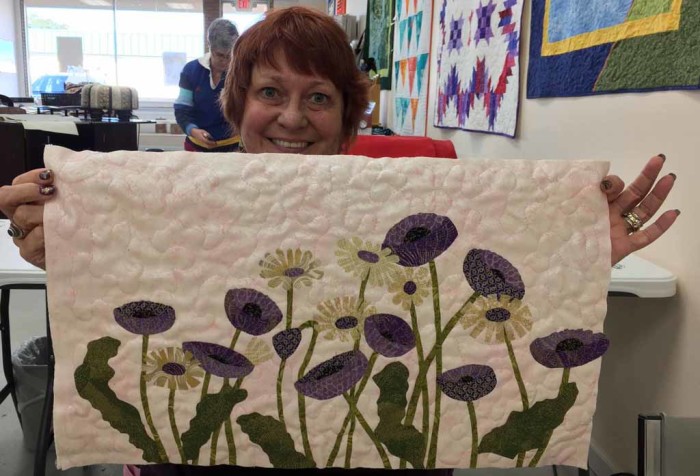
Jo-Ann was still experimenting at this stage, but she had some really great things happening. Like those s-t-r-e-t-c-h-e-d daisies. They have lots of personality. I know this is going to be full of life.

Cindy is fairly new to quilting, but she fully embraced the project. She did a great job.
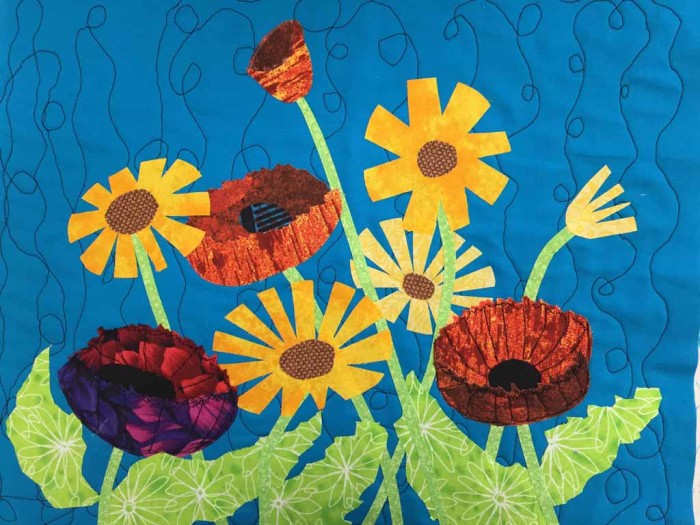
Barbara’s dark background really set off her pastel flowers beautifully. She only has a little stitching left to do. I can’t wait to see her finished quilt!

Bobbi was speedy and she managed to create a lot flowers in a short period of time. She also fussy cut some shapes from a pink fabric to serve as buds. A very nice touch. It’s bright and wonderful!

Another 3 students packed up before I could photograph their work, but I can assure you it was on a par with these. I’m SO delighted by these results in the very first offering of this class!
I’m now taking this class on the road. Let me know if your guild would like to have me add you to my schedule. (Email link below.)
Ellen Lindner



